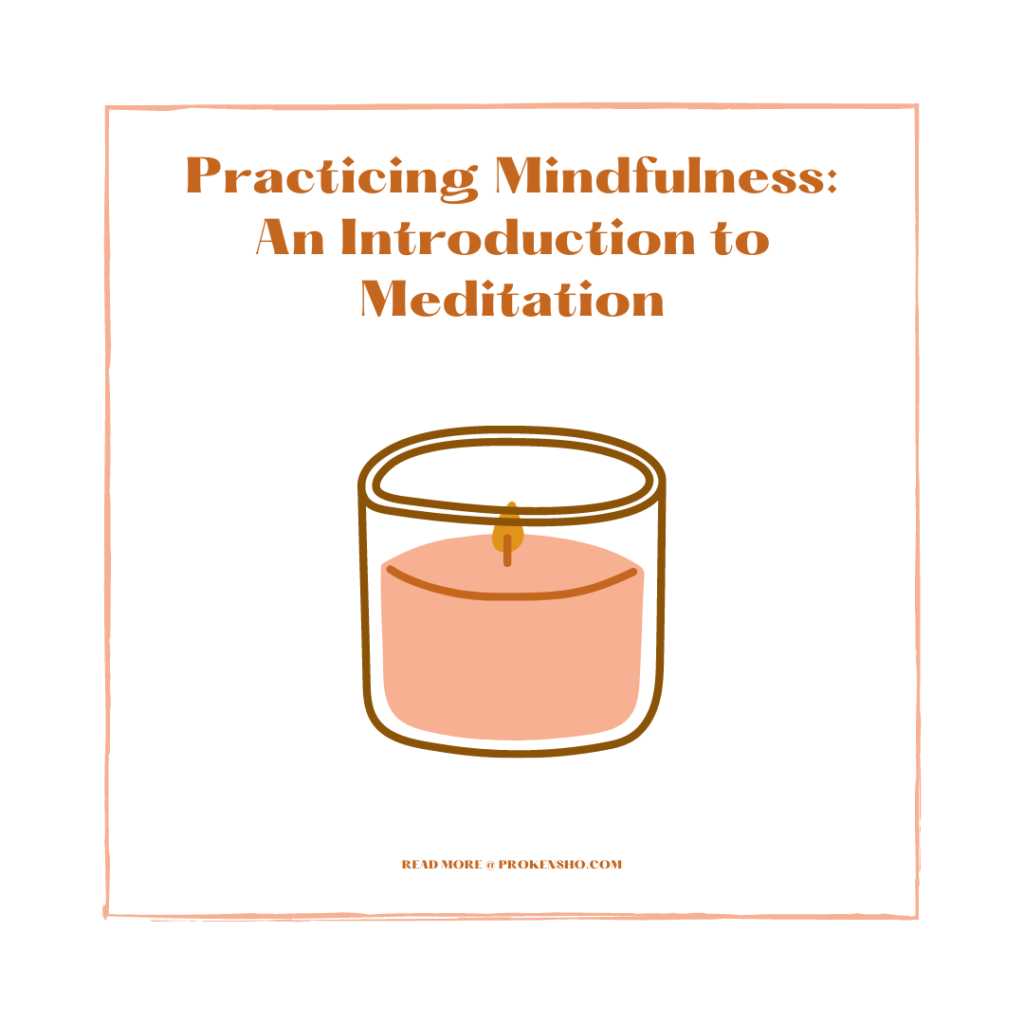Mindfulness is the skill of being deliberately attentive to one’s experience as it unfolds—without the superimposition of our usual commentary and conceptualizing. The capacity to be mindful provides a wholesome way to attend to our experiences and helps us overcome the unskilful habits of mind that cause us to suffer needlessly.
This article is a practical guide to developing the skill of mindfulness and applying it to every aspect of daily life.
The foundational technique for cultivating mindfulness is the practice of meditation. Meditation is a form of physical and mental exercise that serves to strengthen the natural ability to bring moment-by-moment awareness to our lives.
Since mindfulness is the skill of opening ourselves to reality without judgment, we must approach the practice of meditation in this spirit, relinquishing preconceptions and expectations about the discipline.
It is also essential to provide a spiritual and physical context conducive to meditation. Using the Five Precepts of Buddhism, we usually consider the interconnections of ethical behavior with the development of mindfulness and the shaping of personal character.
Then, as a next step in the practice, we also study the most effective postures for sitting meditation. Beginning the actual practice of meditation starts with focusing attention on the breath and observing when the mind strays. By noticing when attention has wandered away from its focal point and then gently returning it to the breath, we gradually strengthen our capacities for concentration and awareness.
Practicing mindfulness over time reveals and develops the qualities of wisdom and compassion, the twin virtues of the discipline. Wisdom means seeing clearly into the fundamental nature of reality.
Through meditative practice, we can deeply recognize the eternal arising and passing away of all phenomena and see the unsatisfactory quality of ordinary human experience that derives from the illusion of the self as an entity separate from the rest of reality.
(Related: Mindfulness Exercises to Reduce Stress or Anxiety)
Practice is the key to mindfulness.
Mindfulness techniques are skills that anyone can develop and apply to the simplest aspects of living: breathing, sensing, feeling, eating, walking, speaking, and even driving.
When we’ve covered the fundamental aspects of mindfulness practice, we’ll work on more challenging things: cultivating compassion for ourselves and others; developing a life of generosity; accepting our mortality; and coping with physical pain, grief, and anger.
We’ll explore difficulties often encountered in meditation and ways of working with these impediments to strengthen concentration and to counter frustration and discouragement.
Compassion—the desire to alleviate suffering—is an essential component of our nature as human beings. Mindfulness practices such as metta meditation allow us to cultivate compassion and develop empathy for others, deeply recognizing their inner experience.
Dana (sharing with others) reveals the life-giving effects of generosity on both the giver and the receiver and helps us understand our attachment to “things.” We’ll also consider how both inner experience and outward action are influenced by our use of language, reflecting on four Buddhist principles of skillful communication.
Finding compassion for ourselves is more challenging for many of us, particularly the perfectionists among us; mindfulness techniques can help us embrace and accept both imperfection and perfectionism as an opening to freedom and deeper humanity.
The skills of mindfulness also offer powerful means to work with physical discomfort—through understanding the crucial distinction between pain and suffering—as it directly affects our perceptions.
Reflecting on the universality of loss, we’ll take a deeper look at the notion of impermanence. By learning to embrace life’s transience and to center our focus on the present moment, we can experience loss and even grief without fear or aversion.
In the mindfulness tradition, the practice of reflecting on death is considered to be both liberating and essential to living a full and satisfying life. We’ll examine how our culture conditions us to avoid and deny death, and we’ll learn meditations that deepen both the awareness of life’s transience and our ability to live freely.
Finally, we’ll reflect on the capacity of mindfulness practice to profoundly alter our perceptions of ourselves, the world, and our place in it.
(Also Read: Why Am I Sad Quiz)
Indian Flute Music for Meditation & Yoga | Krishna’s Flute | Namaste Music
This is the extended version of the first track of our Indian Flute (bansuri) series. The bansuri is revered as Hindu god Krishna’s divine instrument, it is often intimately linked to the love story of Krishna and Radha. Krishna is the god of protection, compassion, tenderness, and love and is one of the most popular and widely revered among Indian divinities. This 12-hour Indian flute music with harp and chimes is ideal for daily meditation and yoga, it can also be used for relaxation, studying, reading, deep sleep, and stress relief.
(Source: ParadiseTonight (Meditation Music & more))


Pingback: Mindlessness in Perspective: Mindlessness as a Mental Condition - ProKensho